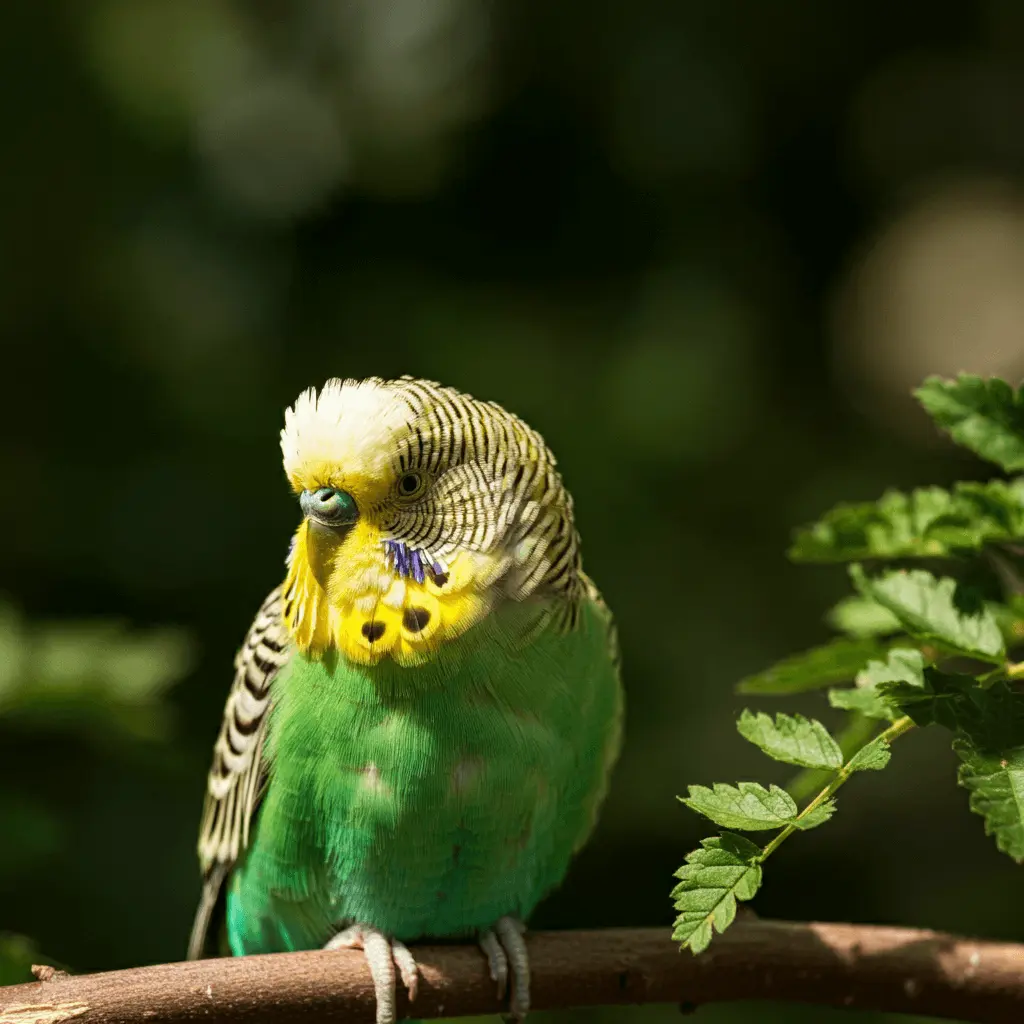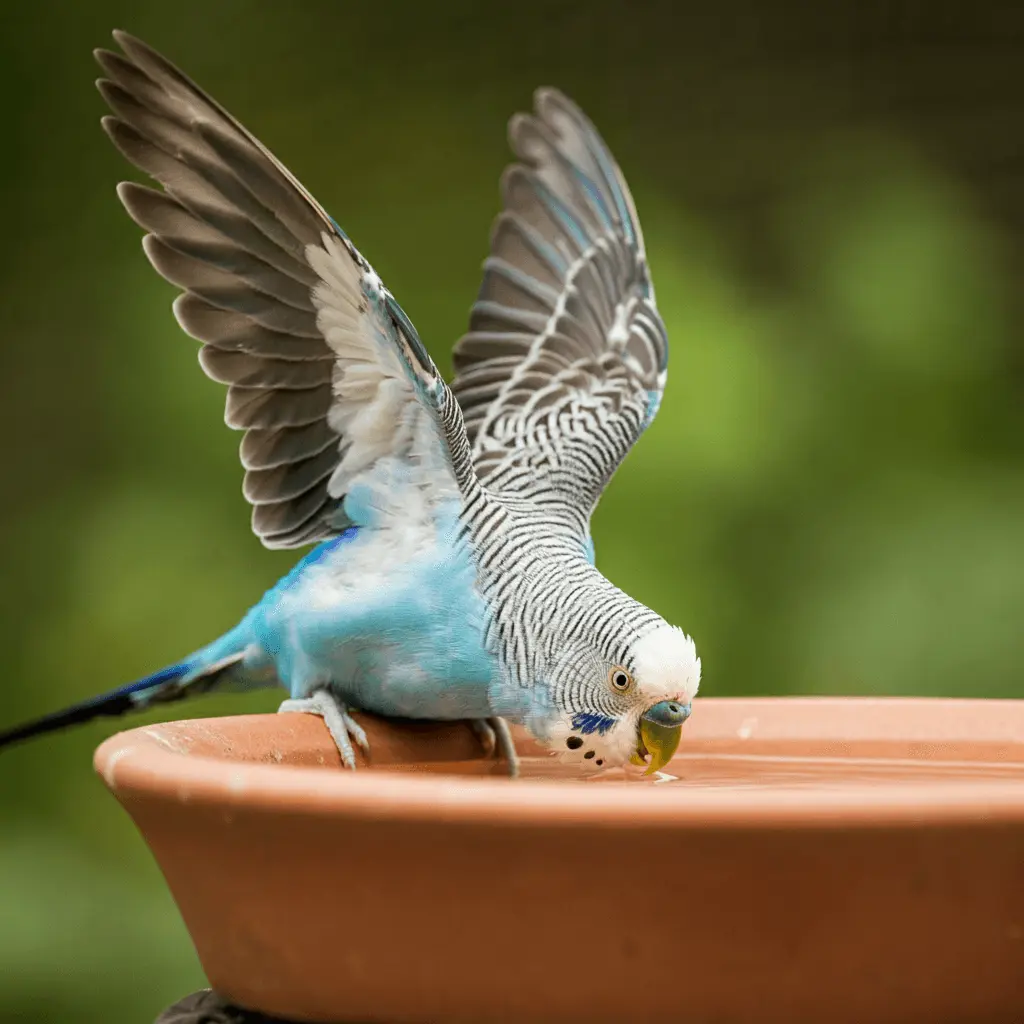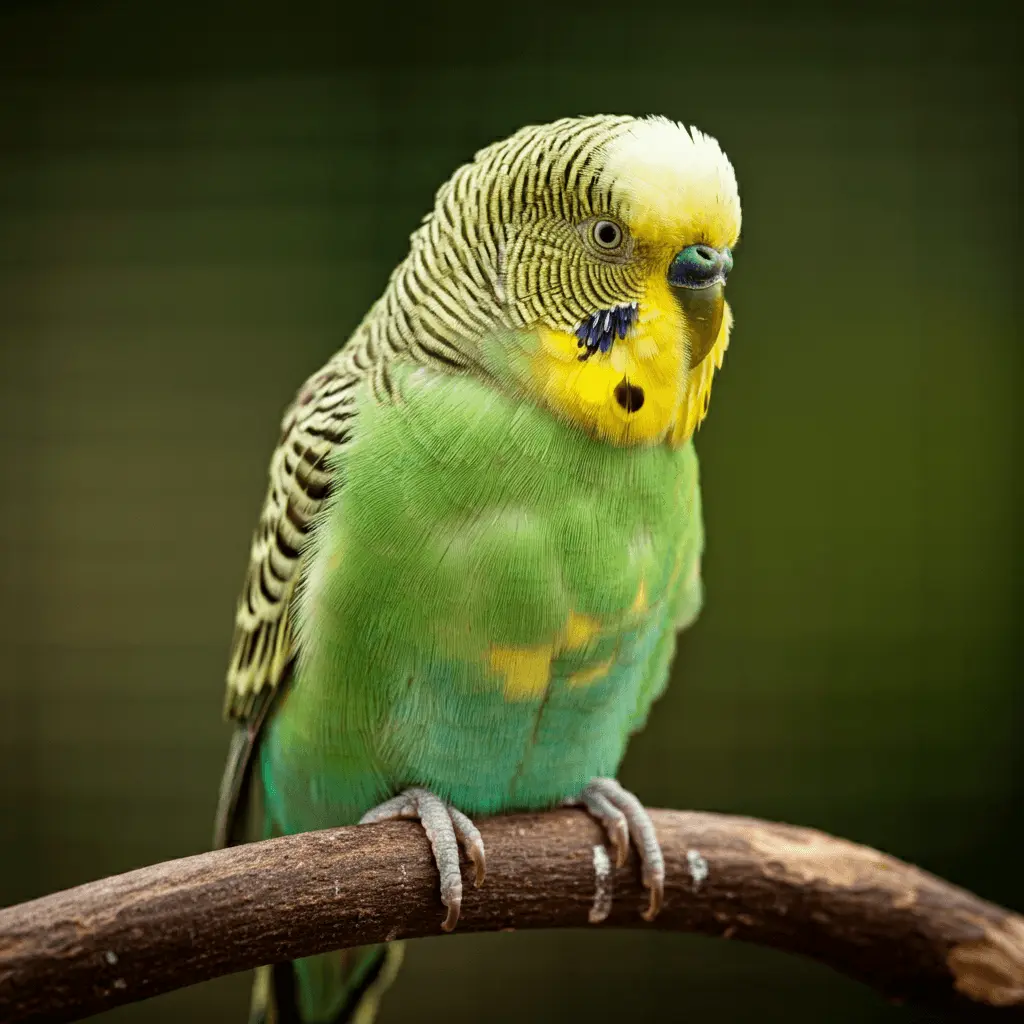Introduction
Caring for your budgerigar throughout the year involves understanding how seasonal changes can impact their health and well-being. Whether it’s the chill of winter or the heat of summer, providing the right environment and care is essential to keep your budgie happy and healthy. In this guide, we’ll walk you through essential seasonal care tips for budgerigars that cover both winter and summer, ensuring your feathered friend thrives no matter the weather.
Winter can be a challenging time for budgies, as the cold temperatures can easily affect their delicate systems. From keeping them warm to adjusting their diet, knowing how to care for your budgerigar in winter is crucial. On the other hand, summer brings its own set of challenges, with the risk of overheating and dehydration. We’ll explore simple yet effective ways to protect your budgie from the summer heat while ensuring they remain hydrated and comfortable.
This post aims to provide practical, actionable advice that you can easily implement to maintain your budgerigar’s health all year round. Whether you’re a seasoned bird owner or new to caring for budgies, these seasonal care tips will help you keep your pet safe and content, regardless of the season. Let’s dive in and explore how to adjust your budgie’s care routine to meet the demands of winter and summer, ensuring they stay in top shape no matter the time of year.
Understanding the Seasonal Needs of Budgerigars
Budgerigars, or budgies as they’re commonly known, are resilient little birds, but they’re still sensitive to the changes that each season brings. Just like us, they need specific care to stay healthy and comfortable as the weather shifts from warm to cold and back again. Understanding the seasonal needs of budgerigars is crucial to ensuring that your pet stays in the best possible shape throughout the year.
In winter, the cold can be particularly tough on budgies. Their small size makes them vulnerable to drops in temperature, which can lead to cold stress if they’re not properly protected. It’s essential to create a warm, draft-free environment for your budgie during the colder months. Adjusting their diet to include more nutrient-rich foods can also help them maintain their energy levels and keep warm.
On the flip side, summer presents the opposite challenge—keeping your budgie cool. Budgerigars are prone to overheating, especially if they’re exposed to direct sunlight or high indoor temperatures. Ensuring they have access to plenty of fresh water and a well-ventilated, shaded space is key to preventing heat stress. A balanced diet with hydrating foods can also support their well-being during the hot months.
By recognizing these seasonal needs, you can make the necessary adjustments to your budgie’s care routine. This not only helps prevent common seasonal health issues but also ensures that your budgie remains comfortable and happy, no matter what the weather is like outside. Whether it’s winter or summer, being aware of how to care for your budgerigar through the seasons will set the foundation for a long, healthy life for your feathered friend.
Winter Care Tips for Budgerigars

A budgerigar enjoying the warmth of sunlight, which is essential for their well-being, especially during winter.
Winter can be a challenging time for budgerigars, as these tropical birds aren’t naturally equipped to handle cold temperatures. To keep your budgie safe and comfortable during the winter months, you’ll need to make some adjustments to their environment and daily care routine. Here are some essential winter care tips for budgerigars that will help you protect your feathered friend from the cold.
1. Adjusting Indoor Temperature
The most important factor in winter care is maintaining a stable, warm environment for your budgie. Ideally, the temperature in your home should be kept between 65°F and 75°F (18°C to 24°C). Avoid placing the cage near windows, doors, or any areas where drafts might occur. If your home tends to get chilly, consider using a bird-safe heater or a heat lamp designed for small pets to keep the area around the cage warm.
2. Providing a Nutrient-Rich Diet
During winter, your budgie will need more energy to maintain its body temperature, so providing a nutrient-rich diet is crucial. Offer a variety of seeds, fresh vegetables, and fruits to ensure they get the necessary vitamins and minerals. You might also consider adding a little extra protein, like boiled egg or sprouted seeds, to their diet to help them stay warm and healthy.

A well-balanced bowl of seeds, fruits, and vegetables to ensure your budgerigar stays healthy throughout the seasons.
3. Ensuring Adequate Lighting
With shorter days and less natural sunlight in winter, it’s important to ensure your budgie gets enough light. Adequate lighting helps regulate their sleep patterns and overall well-being. Consider using a full-spectrum light designed for birds to mimic natural sunlight, providing your budgie with the light exposure they need during the darker months.
4. Managing Humidity Levels
Winter air can be dry, especially if you’re using indoor heating. Low humidity can lead to dry skin and respiratory issues in budgerigars. To combat this, you can use a humidifier in the room where your budgie is kept. Aim for a humidity level of around 50% to keep your budgie’s environment comfortable and reduce the risk of health problems.
5. Preventing Drafts and Cold Air Exposure
Drafts are one of the biggest dangers to budgerigars in winter. Even a brief exposure to a cold draft can lead to serious health issues like respiratory infections. Make sure the cage is placed in a draft-free area and that the room is well-insulated. Covering the cage at night with a breathable, insulated cover can also help keep your budgie warm while they sleep.
By following these winter care tips, you can ensure that your budgerigar stays warm, healthy, and happy throughout the colder months. Winter may pose its challenges, but with the right care, your budgie can thrive even when the temperature drops.
Summer Care Tips for Budgerigars

A budgerigar perched among lush greenery, enjoying the benefits of fresh air and natural surroundings.
Summer can be just as challenging for budgerigars as winter, especially when temperatures soar. Budgies are susceptible to heat stress, and it’s crucial to ensure they stay cool and comfortable during the hot months. Here are some practical summer care tips for budgerigars to help you keep your feathered friend safe and happy when the temperature rises.
1. Maintaining a Comfortable Temperature
One of the most important things you can do in summer is to ensure your budgie’s environment stays cool. Ideally, the temperature around your budgie should be kept between 65°F and 80°F (18°C to 27°C). Avoid placing the cage in direct sunlight or in rooms that get too hot during the day. If necessary, use fans or air conditioning to keep the room at a comfortable temperature, but make sure that the airflow isn’t blowing directly on your budgie.
2. Hydration and Fresh Water
Staying hydrated is essential for budgerigars, especially in the summer heat. Make sure your budgie always has access to fresh, clean water. You might need to change the water more frequently during hot days to keep it cool and refreshing. Consider adding a shallow dish of water in the cage for your budgie to splash around in—this not only helps them cool off but also encourages natural bathing behaviors.
3. Providing Shade and Ventilation
Proper ventilation and shade are key to keeping your budgie cool during the summer. If your budgie enjoys some outdoor time, ensure their cage or aviary is placed in a shaded area where they are protected from direct sunlight. Indoors, keep the cage away from windows where sunlight can cause the temperature to rise quickly. Good air circulation is vital, so keep windows open (with screens) or use fans to ensure the air doesn’t become stagnant.
4. Protecting Against Overheating
Overheating is a serious risk for budgerigars in the summer. Signs of overheating include panting, holding wings away from the body, and lethargy. If you notice any of these symptoms, move your budgie to a cooler area immediately and offer them water. You can also mist your budgie lightly with water to help them cool down. In extreme heat, consider moving your budgie to the coolest room in the house during the hottest parts of the day.
5. Adjusting Diet for Warmer Months
In summer, it’s important to adjust your budgie’s diet to help them stay hydrated and healthy. Offer water-rich fruits and vegetables like cucumber, melon, and leafy greens to keep them cool and hydrated. Avoid overfeeding fatty seeds, as these can contribute to overheating. Instead, focus on a balanced diet that supports their energy levels without adding unnecessary heat to their bodies.
By implementing these summer care tips for budgerigars, you can help your pet stay cool, hydrated, and comfortable during the hottest months of the year. With a little extra attention and the right adjustments, your budgie can enjoy a safe and happy summer.
Common Seasonal Health Concerns in Budgerigars
Budgerigars are generally hardy birds, but they can be prone to certain health issues depending on the season. Being aware of these common seasonal health concerns can help you take preventive measures and ensure your budgie remains in good health throughout the year. Here’s what you need to watch out for during both winter and summer.
1. Recognizing Signs of Cold Stress
Winter can be particularly harsh on budgerigars, and cold stress is a common issue. Budgies that are exposed to low temperatures or drafts can quickly develop cold stress, which can lead to more serious health problems like respiratory infections. Signs of cold stress include fluffing up feathers, lethargy, shivering, and reduced appetite. If you notice these symptoms, it’s crucial to warm up your budgie’s environment immediately. Moving the cage to a warmer area and providing extra warmth through a heat lamp or bird-safe heater can help prevent cold stress from progressing.
2. Preventing Heatstroke and Dehydration
Summer brings the risk of heatstroke and dehydration, both of which can be life-threatening for budgerigars. Budgies don’t sweat like humans, so they rely on panting and holding their wings away from their bodies to cool down. If your budgie is overheating, you might notice heavy panting, lethargy, and even unconsciousness in severe cases. To prevent heatstroke, always keep your budgie in a cool, well-ventilated space during hot weather. Ensure they have access to fresh water at all times and consider misting them lightly with water to help them stay cool. Dehydration is another concern in the summer; if your budgie isn’t drinking enough, they could become weak and more susceptible to illness. Providing plenty of hydrating foods like fresh fruits and vegetables can help keep them hydrated.

A budgerigar drinking water to stay hydrated, an essential practice during hot summer days.
3. Respiratory Infections
Both winter and summer can bring respiratory issues in budgerigars. In winter, cold drafts and dry air can lead to respiratory infections, while in summer, poor ventilation and high humidity can contribute to respiratory problems. Symptoms of a respiratory infection include sneezing, nasal discharge, wheezing, and labored breathing. If you notice any of these signs, it’s important to seek veterinary care immediately. Keeping your budgie’s environment at a stable temperature with good ventilation and humidity control can go a long way in preventing respiratory infections.
4. Feather Plucking and Skin Issues
Seasonal changes can also affect your budgie’s skin and feathers. In winter, dry air can lead to itchy, flaky skin, which might cause your budgie to start plucking their feathers. In summer, increased humidity and heat can make your budgie more prone to skin irritations or fungal infections. Regularly misting your budgie with water, ensuring proper humidity levels, and providing a balanced diet rich in vitamins can help maintain healthy skin and feathers year-round.
By staying vigilant and addressing these common seasonal health concerns in budgerigars, you can ensure your bird stays healthy and comfortable through all seasons. Understanding how different weather conditions affect your budgie allows you to take the necessary steps to prevent issues before they arise, giving your feathered friend the best chance at a long, happy life.
Seasonal Enrichment Activities for Budgerigars
Keeping your budgerigar mentally and physically stimulated throughout the year is essential for their well-being. Seasonal enrichment activities tailored to winter and summer can help your budgie stay happy, active, and healthy, no matter the weather. Here are some ideas to keep your budgie engaged and entertained during different seasons.
1. Winter: Indoor Play and Stimulation Ideas
Winter months often mean more time indoors, so it’s important to provide plenty of indoor enrichment to keep your budgie busy. Create a safe indoor playground with a variety of toys that encourage exploration and movement. Consider hanging a swing or placing ladders inside the cage to promote climbing. Puzzle toys that hide treats can stimulate their foraging instincts, keeping their minds sharp even when outdoor time is limited.
Introduce new toys regularly to keep things fresh and exciting, but remember to rotate them to prevent boredom. Additionally, spending quality time with your budgie by teaching them new tricks or simply engaging in playtime together can strengthen your bond and provide mental stimulation. Soft background music or nature sounds can also create a soothing environment, helping your budgie feel relaxed during the colder months.
2. Summer: Safe Outdoor Time and Fresh Air
Summer offers a great opportunity to let your budgerigar enjoy some outdoor time, but safety is key. If you have a secure, shaded area outside, you can let your budgie spend some time in the fresh air. Make sure the space is well-protected from predators and that your budgie isn’t exposed to direct sunlight for extended periods. Outdoor aviaries or cages with good ventilation are ideal for summer enrichment.
To keep your budgie cool and entertained, you can set up a shallow water dish or a misting area where they can bathe and play. Budgies love to splash around, and this can be a fun way for them to cool off while getting some exercise. You can also bring the outdoors inside by placing fresh, bird-safe branches or leaves in the cage for your budgie to explore and chew on. Just ensure that any plant material is free from pesticides and safe for birds.
Interactive play sessions are also great for summer, especially in the cooler parts of the day. Spend time with your budgie, encouraging them to fly or hop around a safe indoor space. This not only provides physical exercise but also keeps their mind active and engaged.
3. Year-Round Enrichment
No matter the season, providing your budgie with a variety of enrichment activities is crucial. Regular interaction, varied toys, and opportunities for physical activity will keep your budgie healthy and happy year-round. Rotate toys and change up their environment occasionally to keep things interesting.
Consider adding natural elements like untreated wood perches or bird-safe plants to their cage, which can provide both mental and physical stimulation. Training sessions, where you teach your budgie new words or tricks, can also be a fun and rewarding way to bond and enrich their daily routine.
By tailoring enrichment activities to the season, you can ensure your budgerigar stays engaged, happy, and healthy all year long. Whether it’s through indoor play during the winter or safe outdoor adventures in the summer, these activities will help keep your budgie entertained and thriving, no matter the weather.
Frequently Asked Questions (FAQs)
1. How can I keep my budgerigar warm during winter?
To keep your budgerigar warm during winter, maintain a stable indoor temperature between 65°F and 75°F (18°C to 24°C). Place the cage in a draft-free area, away from windows and doors. You can also use a bird-safe heater or heat lamp to provide additional warmth. Ensure your budgie’s diet is rich in nutrients, as this will help them maintain their energy levels and body heat.
2. What are the signs of overheating in budgerigars during summer?
Signs of overheating in budgerigars include heavy panting, holding their wings away from their body, lethargy, and in severe cases, unconsciousness. If you notice these symptoms, move your budgie to a cooler area immediately, offer them fresh water, and consider misting them lightly with water to help them cool down.
3. Can I take my budgerigar outside during the summer?
Yes, you can take your budgerigar outside during the summer, but it’s important to do so safely. Ensure they are in a secure, shaded area with plenty of ventilation and protection from predators. Avoid direct sunlight, and never leave your budgie outside unsupervised. An outdoor aviary or a well-ventilated cage in a shaded spot is ideal for safe outdoor time.
4. How do I prevent cold stress in my budgerigar during winter?
Prevent cold stress in your budgerigar by keeping their environment warm and draft-free. Cover the cage at night with a breathable, insulated cover to retain warmth. Ensure your budgie is eating well, as a nutrient-rich diet will help them generate the energy needed to stay warm. Regularly check the temperature in the room to ensure it doesn’t drop too low.
5. What kind of foods should I feed my budgerigar in summer to keep them hydrated?
In summer, focus on feeding your budgerigar water-rich fruits and vegetables like cucumber, melon, and leafy greens to help keep them hydrated. Ensure they always have access to fresh, clean water, and consider adding a shallow dish of water to the cage for them to splash in, which can also help with hydration and cooling.
6. How can I provide enrichment for my budgerigar during winter?
During winter, indoor enrichment is key. Provide your budgie with a variety of toys that encourage movement and mental stimulation, such as swings, ladders, and puzzle toys that hide treats. Regularly rotate toys to keep things interesting, and spend quality time with your budgie, teaching them new tricks or engaging in interactive play.
7. Should I adjust my budgerigar’s diet in winter?
Yes, it’s a good idea to adjust your budgerigar’s diet in winter to include more nutrient-rich foods. A balanced diet that includes a variety of seeds, fresh vegetables, fruits, and a little extra protein, like boiled egg or sprouted seeds, will help your budgie maintain their energy levels and stay warm during the colder months.
These FAQs address common concerns and provide practical advice to help you take the best possible care of your budgerigar through the changing seasons. By following these tips, you can ensure your budgie remains healthy, happy, and well-cared-for year-round.
Conclusion
Caring for your budgerigar throughout the year involves more than just meeting their basic needs—it requires adapting to the changing seasons to ensure they stay healthy and happy. By understanding the seasonal care tips for budgerigars, you can make informed adjustments to their environment, diet, and daily routine, helping them thrive no matter the weather.
In winter, focus on keeping your budgie warm and cozy, with a nutrient-rich diet and a draft-free environment. In summer, your priority shifts to keeping them cool, hydrated, and safe from overheating. Addressing common seasonal health concerns and providing tailored enrichment activities will further enhance your budgie’s well-being, making sure they remain active and content all year round.
Whether you’re preparing for the cold of winter or the heat of summer, the key to successful budgerigar care lies in being attentive to their needs and proactive in your approach. By following these seasonal care tips, you’re not only protecting your budgie from potential health issues but also enriching their life, ensuring they live a long, joyful, and fulfilling life as part of your family.

